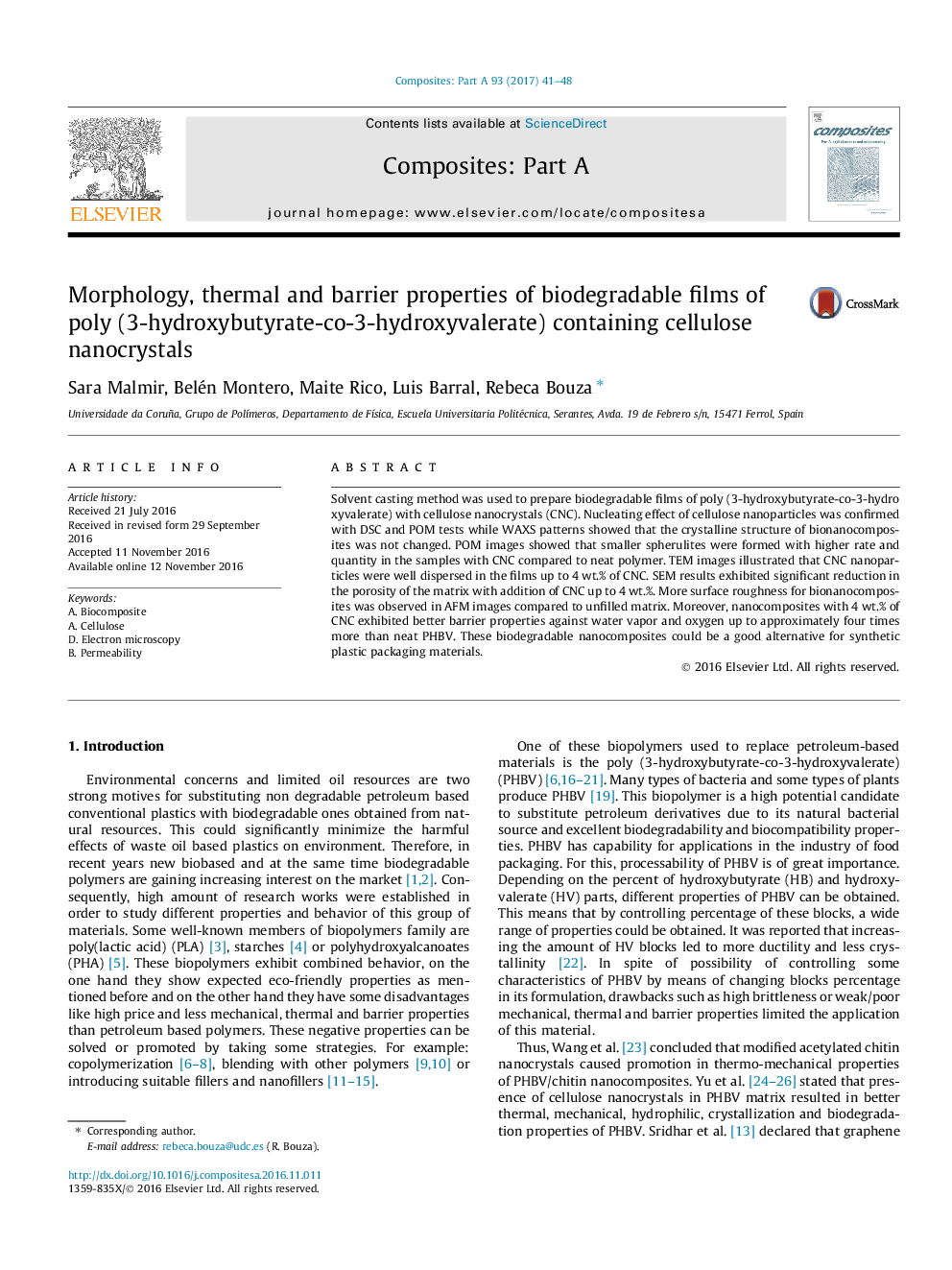| Article ID | Journal | Published Year | Pages | File Type |
|---|---|---|---|---|
| 5439655 | Composites Part A: Applied Science and Manufacturing | 2017 | 8 Pages |
Abstract
Solvent casting method was used to prepare biodegradable films of poly (3-hydroxybutyrate-co-3-hydroxyvalerate) with cellulose nanocrystals (CNC). Nucleating effect of cellulose nanoparticles was confirmed with DSC and POM tests while WAXS patterns showed that the crystalline structure of bionanocomposites was not changed. POM images showed that smaller spherulites were formed with higher rate and quantity in the samples with CNC compared to neat polymer. TEM images illustrated that CNC nanoparticles were well dispersed in the films up to 4Â wt.% of CNC. SEM results exhibited significant reduction in the porosity of the matrix with addition of CNC up to 4Â wt.%. More surface roughness for bionanocomposites was observed in AFM images compared to unfilled matrix. Moreover, nanocomposites with 4Â wt.% of CNC exhibited better barrier properties against water vapor and oxygen up to approximately four times more than neat PHBV. These biodegradable nanocomposites could be a good alternative for synthetic plastic packaging materials.
Related Topics
Physical Sciences and Engineering
Materials Science
Ceramics and Composites
Authors
Sara Malmir, Belén Montero, Maite Rico, Luis Barral, Rebeca Bouza,
